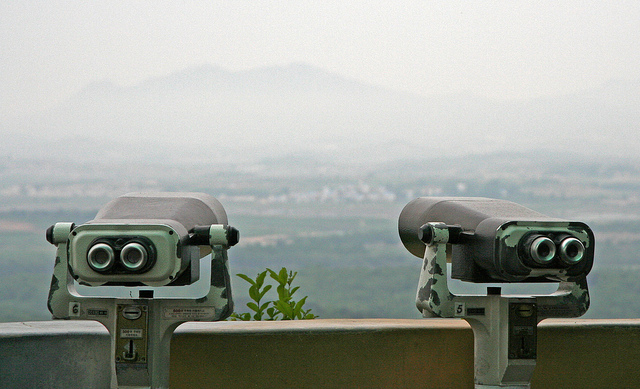Our style of parenting has a lot to do with our story of how we were or were not parented. How we were parented created an “attachment style” in us. These attachment styles were first developed by John Bowlby almost a century ago. His work is a guiding principle in my work as a therapist and how I engage others in their story.
How we relate and attach to others (namely our kids) has a lot to do with our attachment style, of which there are four. They are: Secure; Avoidant; Anxious; and Anxious-Avoidant (Disorganized).
Attachment Styles
Avoidant. They have a high drive for independence. They are often self-referencing (the need to have space apart from others to find and know what they think and feel). There is little trust in others, and they don’t have a strong need to be close to others. Their relationships generally provide the stress, not the comfort. “It’s not ok, and I’m only ok on my own.” Fears relational consumption.
Anxious. There is a high degree of dependency on others. They have a difficulty being on their own a part from important relationships (or, sometimes, any relationship). They are others referencing and trusting, with very little trust in self, high need for others. They themselves generally provide the stress, and they need their relationship to feel comforted. “It’s not ok, and I’m only ok when I’m with you/others.” Fears relational abandonment.
Anxious-Avoidant. This is the style that often feels chaotic to the self, and to others. It’s marked by a “disorganized self” that fluctuates often. They have a difficulty connecting with others for long periods of time. “I’m not ok, we’re not ok, and I don’t really know what is ok.” Fears relational consumption and abandonment.
Secure. These people are interdependent. They understand at an emotional level that they need others, but that they also are ok if others are not available. They have a high degree of autonomy. The “self” is defined and organized regardless if they are alone or with others. “It’s not ok, and I’m ok.” Fears abandoning or consuming others.
Most of us primarily fall into the first two categories and because we’re not static human beings, we often have a mixture of all of these styles. Some relationships will trigger a different style in us, which can sometimes feel really confusing. These are fantastic categories to help you understand yourself better, but also very helpful to know what’s behind the curtain in terms of how you interact with your children. The more we understand ourselves, the less we will need our kids to take care of us.
Parenting Styles
The styles of parenting draw a parallel line to the attachment styles I wrote about above. The four parenting styles are: Withdrawn; Hyperactive; Confused; and Comfortable.
Withdrawn (Avoidant)
- High on shame, low on fear.
- Keep kids at arms length. Fear getting close to them, or them getting close to you.
- Often parents our of a “hit and run” style.
- Emotionally distance themselves children to keep from feeling consumed.
- Intimacy requires togetherness which comes at a loss of independence. Prefers to be independent than together.
- Kids often feel alone with withdrawn parents, and cannot depend on them. Emotionally unavailable for
- Communicates with logic more often sounding like a professor than a caregiver.
- Flatter range of emotions. Difficulty knowing what they feel.
- Often stuffs emotions, then explodes in reaction to something small.
- Rises to the occasion in stress, chaotic situations. Cool under pressure.
- Detached and aloof.
Hyperactive (Anxious)
- High on fear, low on shame.
- Often referred to as the “Helicopter Parent”. Can be controlling and the dominant figure in the home.
- Emotionally consume children to keep from being abandoned.
- Communicates with raw emotion and tends towards bigger expressions
- Wide range of emotions.
- Insecure in parenting approach. Need kids approval and comfort to feel better. Preoccupied with needs of self.
- Communicates with dominance, lacks collaboration in problem solving.
- Does not do well with quiet. Activity is better than sitting around.
- Inconsistent and anxious.
Confused (Anxious-Avoidant)
- High shame and fear.
- Trauma from own childhood creates instability in relationship with own children.
- Chaotic emotional involvement with children.
- Often blows up with the kids for no apparent reason.
- Moody. Able to swing from one extreme to the next without warning.
- Lack compassion or empathy for children. Blame children as reasons for own sufferings/pain.
- Can be personality disordered (Narcissistic, Borderline) that results from unresolved trauma.
Comfortable (Secure)
- Appropriate shame and fear.
- Able to connect with children around their needs
- Willing and able to ask for help and rely on partner or others to meet children’s needs.
- Communicates effectively, adjusting strength and tenderness based on each child’s unique makeup.
- Ok with kids being kids. Does not need them to be the grown up.
- Manages self and emotions well, does not rely on others to “rescue” them, especially the children.
- Seeks forgiveness, and has a willingness to repair hurts.
Like I mentioned earlier, we all have components from all four styles, but we tend to act out of a single style. You might have different answer to this question than your spouse. That’s ok, discuss and learn what they see differently than you do.
Based on these descriptions, what parenting style best fits you? What parenting style best fits your spouse?
Dad’s primary style: ________________________
Dad’s secondary style: ________________________
Mom’s primary style: ________________________
Mom’s secondary style: ________________________
Take 5 minutes and discuss these styles, what’s coming up for you about this, and where you’d like to improve.
On Monday in the series, I will share an assessment tool for your kids to help you uniquely parent each one of them individually. Most of parenting is learning how to get out of your own way, this will be a tool that will help you do this.
Want to learn more about your parenting style and get some personalized help for how you’re parenting your kids? Consider setting up some parenting coaching sessions.
______________________________________

